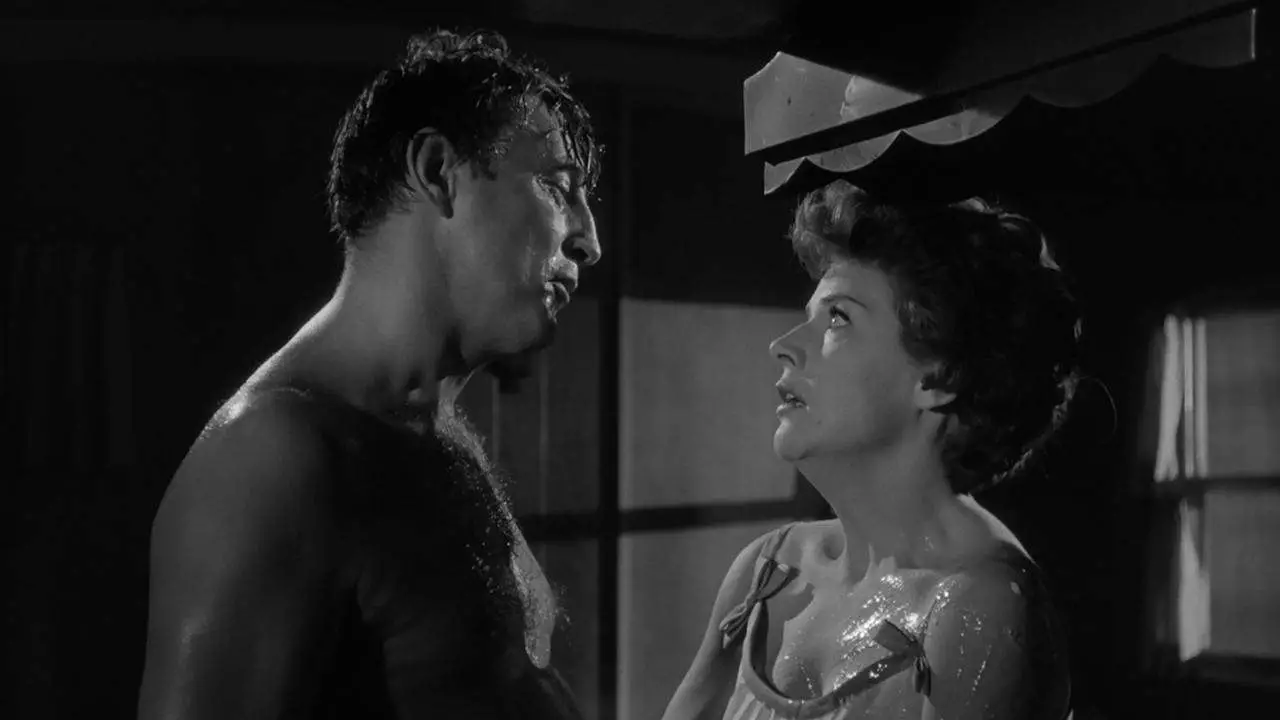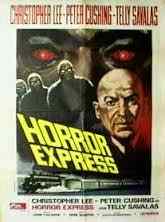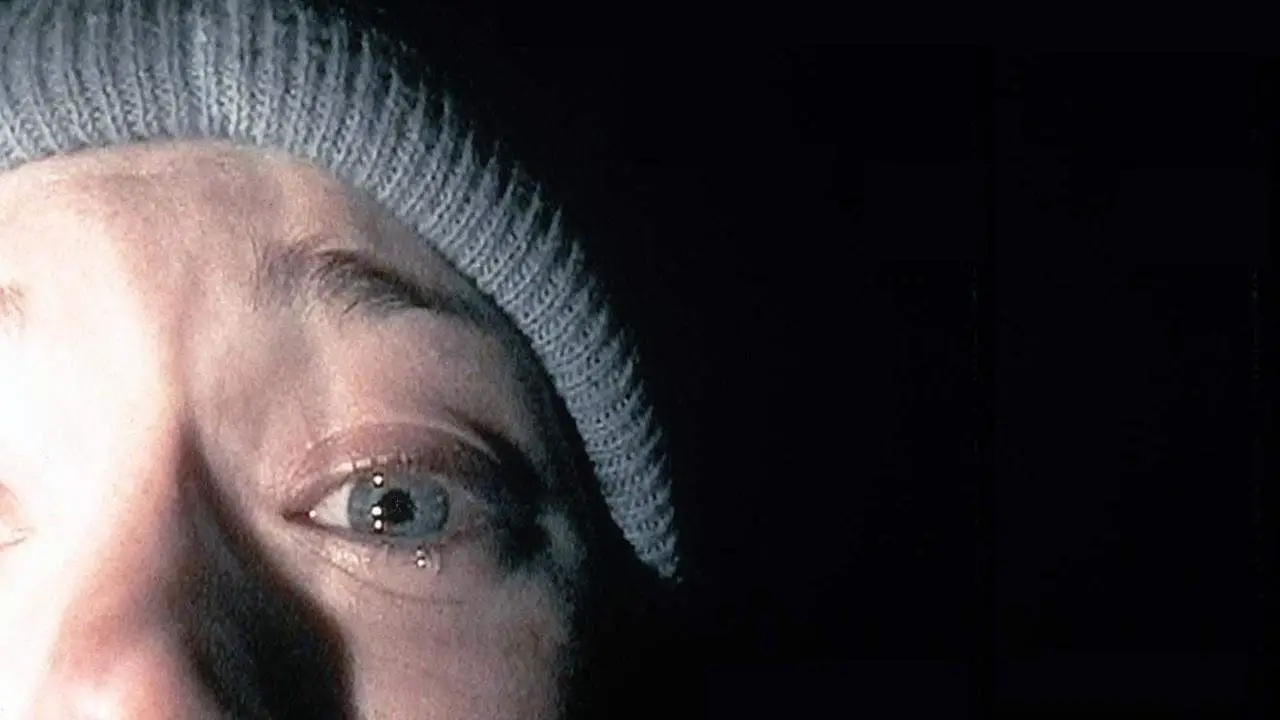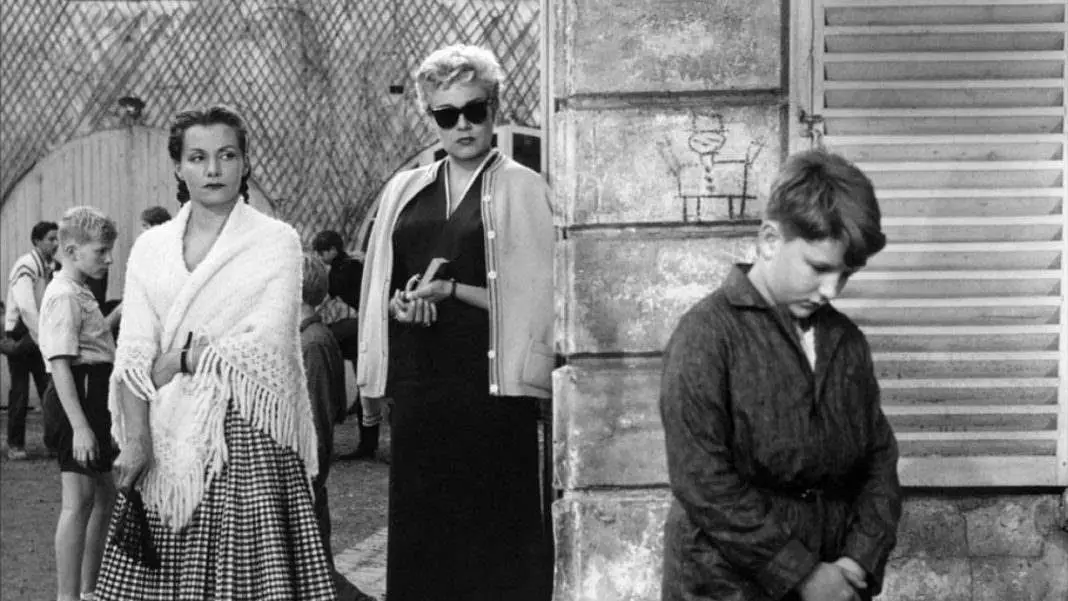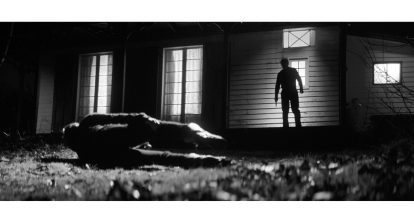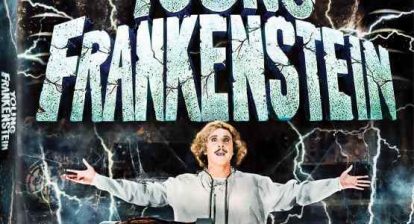Horror movies come in all shapes, sizes, and even colors. As we all eagerly anticipate the next new thing coming in genre film, it’s important that we not forget where it all started. In this series, Michele Eggen takes us back to the classics, and reminds us how effective Horror in Black and White can really be. This week, she spotlights the 1962 thriller Cape Fear.
There are many movies out there that may not immediately fall under the heading of “horror” to some people, yet the characters and ideas presented in them horrify me as much as my favorite fright flicks. One of these is 1962’s Cape Fear, a subtle yet extremely powerful thriller with two equally powerhouse actors leading us through the story. Based on the novel The Executioners by John D. MacDonald, Cape Fear stars Gregory Peck as Sam Bowden, a small-town lawyer who has a happy family life with his wife Peggy and teenage daughter Nancy. That white picket fence world is shattered when someone from Sam’s past reappears: the unrelenting criminal Max Cady, played by Robert Mitchum. Sam helped put Cady in prison for eight years, and, blaming him for his conviction, Cady has returned to ruin Sam’s life and his family in the worst ways he can conjure.

Though it might have just been a product of the time the film was made, the subtle way that this threat is presented to the viewer is a large part of what makes Cape Fear so effective. It is never explicitly stated, but Max Cady is a rapist and the way he wants to get revenge on Sam is by raping his daughter. A line in the film that makes this point clear is when Cady says to Sam, after he has been beaten by a group of thugs is “You just put the law in my hands, and I’m gonna break your heart with it.” It is not so much the act of violence itself that Cady would get pleasure from, but rather knowing that he would be completely destroying this happy family unit forever. The film never even has to be that explicit or in-your-face about Cady’s intentions. It still comes across to the viewers, and hopefully makes them just as uncomfortable as they need to be for what could happen, and just as fearful of the villain.
 The element of the film that really pushes Cape Fear into horror territory is Max Cady, and Robert Mitchum’s brilliant portrayal of him. It has always been one of my favorite performances in film because what Mitchum created with Cady is a completely amoral, unapologetic villain, who is even more terrifying because he is human. The whole movie is a showcase for just how electrifying and intense Mitchum can be. At one point, Cady picks up a girl at a bar and goes home with her. He approaches the end of the bed where the girl is lying, and the look on his face as he stands there staring at her, bare-chested and balling one hand into a fist, shows all the violence and depravity of which this beast is capable. His physical presence against that of Lori Martin’s, who plays Nancy, also makes him more of an imposing figure. She is supposed to be 14 years old in the film but looks much younger, and is a tiny girl who barely comes up to Mitchum’s shoulders. Mitchum gives Cady a kind of callous confidence that makes him just as evil as any other horror movie monster. He can be charming yet repulsive at the same time, and he is totally unpredictable.
The element of the film that really pushes Cape Fear into horror territory is Max Cady, and Robert Mitchum’s brilliant portrayal of him. It has always been one of my favorite performances in film because what Mitchum created with Cady is a completely amoral, unapologetic villain, who is even more terrifying because he is human. The whole movie is a showcase for just how electrifying and intense Mitchum can be. At one point, Cady picks up a girl at a bar and goes home with her. He approaches the end of the bed where the girl is lying, and the look on his face as he stands there staring at her, bare-chested and balling one hand into a fist, shows all the violence and depravity of which this beast is capable. His physical presence against that of Lori Martin’s, who plays Nancy, also makes him more of an imposing figure. She is supposed to be 14 years old in the film but looks much younger, and is a tiny girl who barely comes up to Mitchum’s shoulders. Mitchum gives Cady a kind of callous confidence that makes him just as evil as any other horror movie monster. He can be charming yet repulsive at the same time, and he is totally unpredictable.
Playing opposite Cady is Gregory Peck as Sam. He starts out the film as the epitome of the good guy who is unprepared to deal with a man like Cady. Cady’s relentless pursuit of the Bowdens makes Sam constantly back himself into a moral corner. Once he realizes that Cady’s focus is on attacking Nancy, Sam makes several attempts to get rid of him, and is even forced to step over the line of the law. But though he tries to use his smarts and the help of the police chief (Martin Balsam) and a private investigator (Telly Savalas), Cady proves to be just as smart himself. He never really does anything that Sam can prove to put him away again. Even when he attacks the girl from the bar, he picks a victim he knows won’t talk. All this makes Sam head down a darker path, and in turn makes Cady that much more determined to ruin him. In the final showdown on the Cape Fear river, Cady goes after both Peggy and Nancy, and Sam has to make the choice of just what to do with him. Thankfully, he makes the right choice. He is able to save his family and keep his morality intact, turning the tables on Cady by promising to make his life hell by letting him rot in prison.
 Cape Fear is a movie that is ripe for rediscovery. With its themes of revenge and good versus evil, the story is timeless. There could not have been two better actors for the main roles, though Mitchum really does steal the show from everyone. His performance is proof that a truly scary horror movie villain can simply be a man with a cold heart and evil on his mind. There are many standout scenes that make beautiful use of black and white filming to build tension and suspense, with a completely chilling score to match each shot. If you’ve never seen this film or haven’t seen it in a while, take a look at Cape Fear and see how Horror in Black and White should be done.
Cape Fear is a movie that is ripe for rediscovery. With its themes of revenge and good versus evil, the story is timeless. There could not have been two better actors for the main roles, though Mitchum really does steal the show from everyone. His performance is proof that a truly scary horror movie villain can simply be a man with a cold heart and evil on his mind. There are many standout scenes that make beautiful use of black and white filming to build tension and suspense, with a completely chilling score to match each shot. If you’ve never seen this film or haven’t seen it in a while, take a look at Cape Fear and see how Horror in Black and White should be done.
